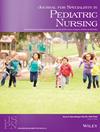The health literacy disparity in adolescents with sickle cell disease
Abstract
Purpose
There are over 100,000 individuals with sickle cell disease (SCD) in the United States, most of whom are Black, poor, and publically insured. In combination with a chronic illness, these demographics lead to significant barriers to healthcare for patients with SCD, leaving them exceptionally vulnerable within the healthcare system. This unique vulnerability is especially notable when transitioning adolescents with SCD from pediatric to adult care, as this is a significant time of morbidity and mortality for these patients. It is postulated that health literacy influences transition from pediatric to adult care in adolescents with SCD. To better understand this relationship, more adolescent health literacy research must be conducted with both adolescents with and without SCD. Therefore, the purpose of this study is to systematically compare health literacy in adolescents with and without SCD.
Design and Methods
This is a cross-sectional, descriptive, exploratory study. One hundred and thirty-four adolescents with SCD and 105 adolescents without SCD were recruited for this study. The Newest Vital Sign (NVS) health literacy instrument was used to evaluate health literacy. Pearson correlations were conducted to evaluate relationships among health literacy and the influencing factors of age, grade level, income, and parental education level. Differences in NVS scores between groups were assessed using independent samples t tests.
Results
There was a significant relationship between health literacy, age (r = .286, p < .01) and grade level (r = .317, p = .00) in adolescents with SCD. In adolescents without SCD, there was a significant relationship between health literacy, income (r = .235; p < .05) and parental education (r = .263; p < .01). The mean NVS score was 2.66 for adolescents with SCD and 3.77 for adolescents without SCD. A statistically significant difference in NVS scores was found between groups (t = 4.772; p < .001). Adolescents with SCD demonstrated significantly lower NVS scores than adolescents without SCD.
Practice Implications
There are significant differences in health literacy scores and influencing factors in adolescents with and without SCD. Thus, this article provides unique insight for nurses as they design, implement and evaluate health promotion, patient education, and future research initiatives for adolescents and families, both with and without SCD. Further research is needed to gain more insight into this phenomenon.

 求助内容:
求助内容: 应助结果提醒方式:
应助结果提醒方式:


